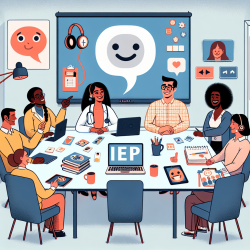The COVID-19 pandemic necessitated a rapid shift from face-to-face to telepractice speech therapy services for children. A recent scoping review titled Face-to-face and Telespeech Therapy Services for Children during the COVID-19 Pandemic: A Scoping Review provides valuable insights for practitioners aiming to enhance their telepractice skills. This blog will distill the key findings and practical recommendations from the review to help speech-language pathologists (SLPs) improve outcomes for children.
Key Findings
The review analyzed 15 studies published between January 2020 and May 2023. Here are some critical insights:
- Approximately all SLPs used telepractice during the pandemic, with high satisfaction levels reported by both parents and students.
- Telepractice was often preferred when supplemented by face-to-face sessions, creating a hybrid model.
- Several barriers were identified, including technological challenges, lack of guidelines, and difficulty managing children's engagement during online sessions.
- Despite these barriers, telepractice showed efficacy comparable to face-to-face therapy in many cases, particularly for language interventions.
Practical Recommendations for Practitioners
Based on the findings, here are some actionable steps for SLPs to enhance their telepractice services:
1. Embrace Hybrid Models
Combining telepractice with face-to-face sessions can offer the best of both worlds. While telepractice provides convenience and broader reach, face-to-face interactions can address more complex needs.
2. Enhance Technological Proficiency
SLPs should invest time in learning and mastering various telepractice tools. This includes video conferencing software, interactive applications, and digital assessment tools. Ensuring robust internet connectivity and troubleshooting common tech issues are also crucial.
3. Foster Parent Involvement
Parents play a vital role in the success of telepractice. Encourage parents to actively participate in sessions and provide them with strategies to manage their children's behavior and engagement. Clear communication and regular feedback can enhance this partnership.
4. Develop Clear Guidelines
The lack of standardized guidelines for telepractice was a significant barrier. Developing and adhering to clear protocols can ensure consistency and quality in service delivery. Professional organizations like ASHA can be valuable resources for guidelines and best practices.
5. Conduct Further Research
While the scoping review provides a solid foundation, more experimental studies are needed to explore the long-term efficacy of telepractice. Practitioners are encouraged to contribute to research efforts by documenting and sharing their experiences and outcomes.
Conclusion
The transition to telepractice during the COVID-19 pandemic has demonstrated its potential to deliver effective speech therapy services. By addressing the identified barriers and leveraging the benefits, SLPs can continue to provide high-quality care and improve outcomes for children. For a more detailed understanding, we recommend reading the original research paper: Face-to-face and Telespeech Therapy Services for Children during the COVID-19 Pandemic: A Scoping Review.










